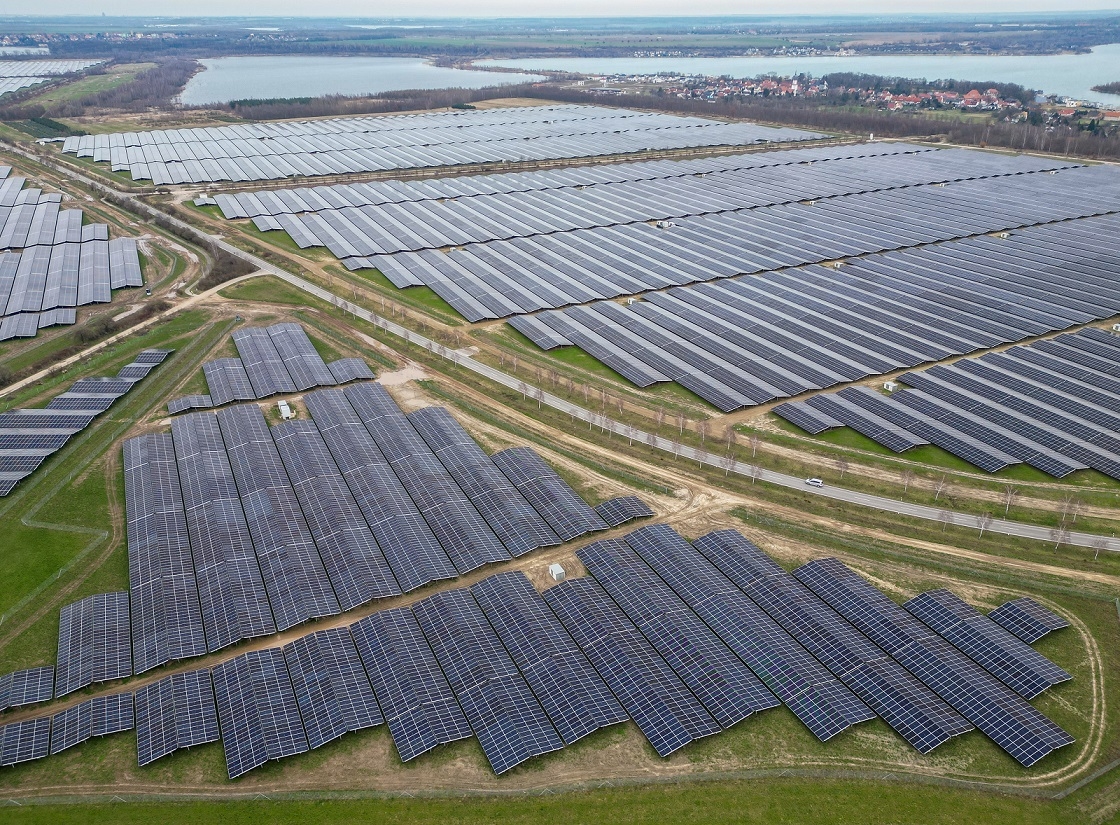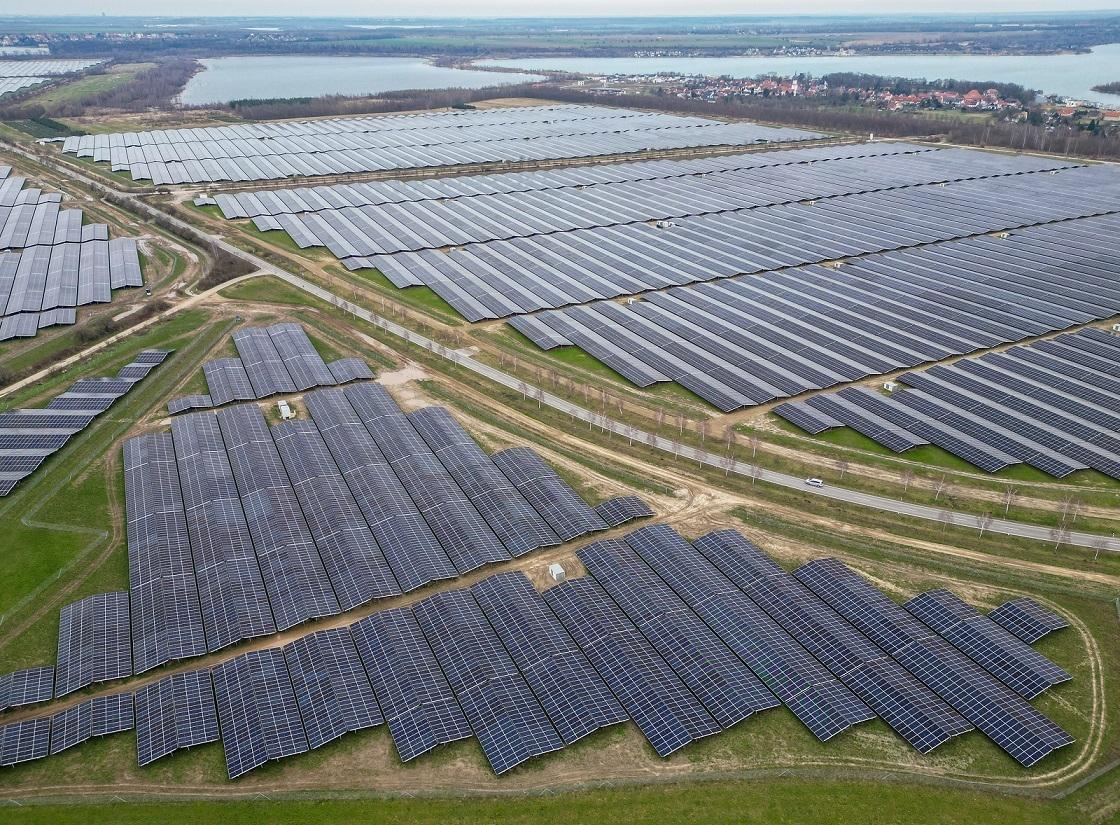
View of the Witznitz energy park, south of Leipzig in Germany. The number of solar modules produced in Germany saw a 52.8% decline in the first quarter. Imports from China also fell significantly. (picture alliance/dpa/Jan Woitias)
The number of solar modules produced in Germany saw a 52.8% decline in the first quarter compared to the same period a year ago, the Federal Statistical Office said. Imports from China also fell significantly, the office said, dropping by two-thirds in the first five months of this year over the same period in 2023.
But more companies and private households are using solar energy to generate electricity. As of April, 3.4 million systems with a nominal capacity of 81,500 megawatts were installed. This was almost 30% more systems than a year earlier, while the installed output increased by 20.5%.
In 2023, the systems delivered a record of 53.6 million kilowatt hours, accounting for almost 12% of the electricity fed into Germany's grid. A little over 27% of the solar power was generated in June alone.
All solar energy systems that feed into public supply networks and have an electricity meter are recorded. Smaller systems, such as the popular balcony power plants, are generally not included.
Among the electricity producers are 1.8 million private households, roughly one in 20 in Germany. For them, it is usually about small amounts of money due to declining feed-in tariffs: In 2022, they earned an average of €183 ($198) per month with self-produced solar power, almost a third less than seven years earlier.

Notice: No person, organization and/or company shall disseminate or broadcast the above article on Xinhua Silk Road website without prior permission by Xinhua Silk Road.




 A single purchase
A single purchase









